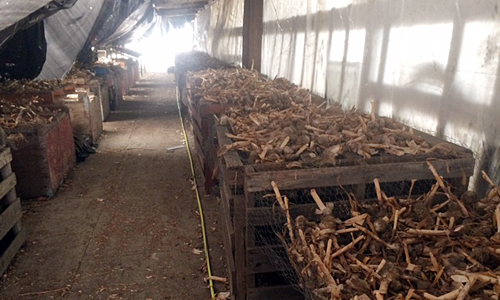
Above, garlic drying/curing in a covered shed on Delta Farm.
We love garlic for flavor and aroma, but ancient civilizations viewed garlic primarily as a medicine. They used it as a remedy for arthritis, toothache, chronic cough, constipation, parasites, snake and insect bites, and gynecologic diseases, as well as an antibiotic against infection. Modern science has proven that some of these concepts are actually true.
Garlic has organosulfur compounds, which are responsible for its pungent aromas and flavor and also for its health benefits. According to the Linus Pauling Institute, organosulfur compounds help prevent cardiovascular disease, lower cholesterol, and regulate blood pressure because of their anti-clotting effects. Some research indicates they may protect against cancer, and that they purify the blood. People use raw garlic topically to prevent infections, or fight fungus. Some consume garlic when they feel a cold coming on, or for beautiful hair and skin.
What about that pungent odor and sharp taste? Even though they indicate the presence of the enzyme alliinase, which breaks down into the organisulfur compounds, most people prefer cooking garlic before they consume it. Does cooking reduce all those health benefits?
Most studies indicate that yes, long cooking reduces the benefits. But according to a 2007 study published in the Journal of Agricultural and Food Chemistry, baking garlic at 390°F for 3 minutes (or boiling it for 3 minutes) does not greatly affect its anti-clotting abilities. However, heating it for 6 minutes reduces it significantly. At the same time, crushing or mincing raw garlic and leaving it for 10 minutes, then adding it towards the very end of cooking time maintains more of the alliinase. So watch the clock, and you can have your garlic and eat it, too!
